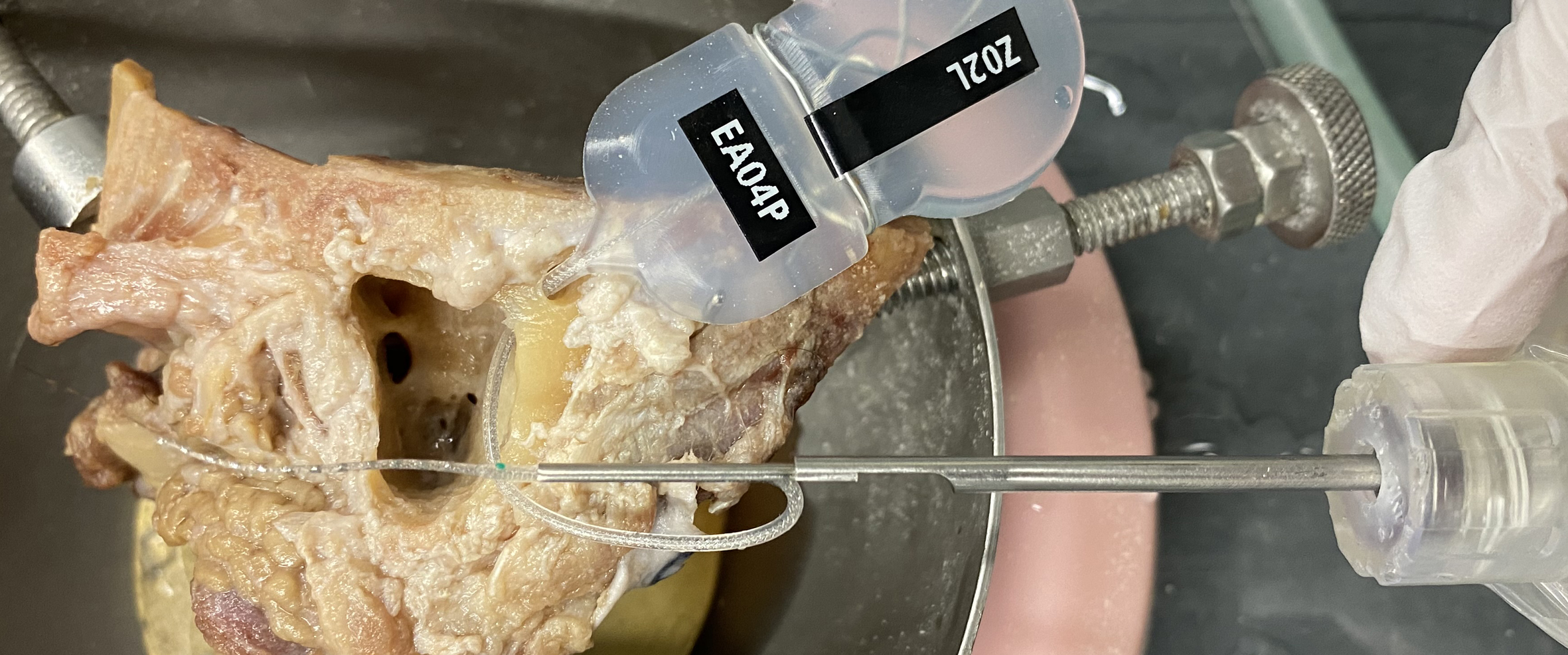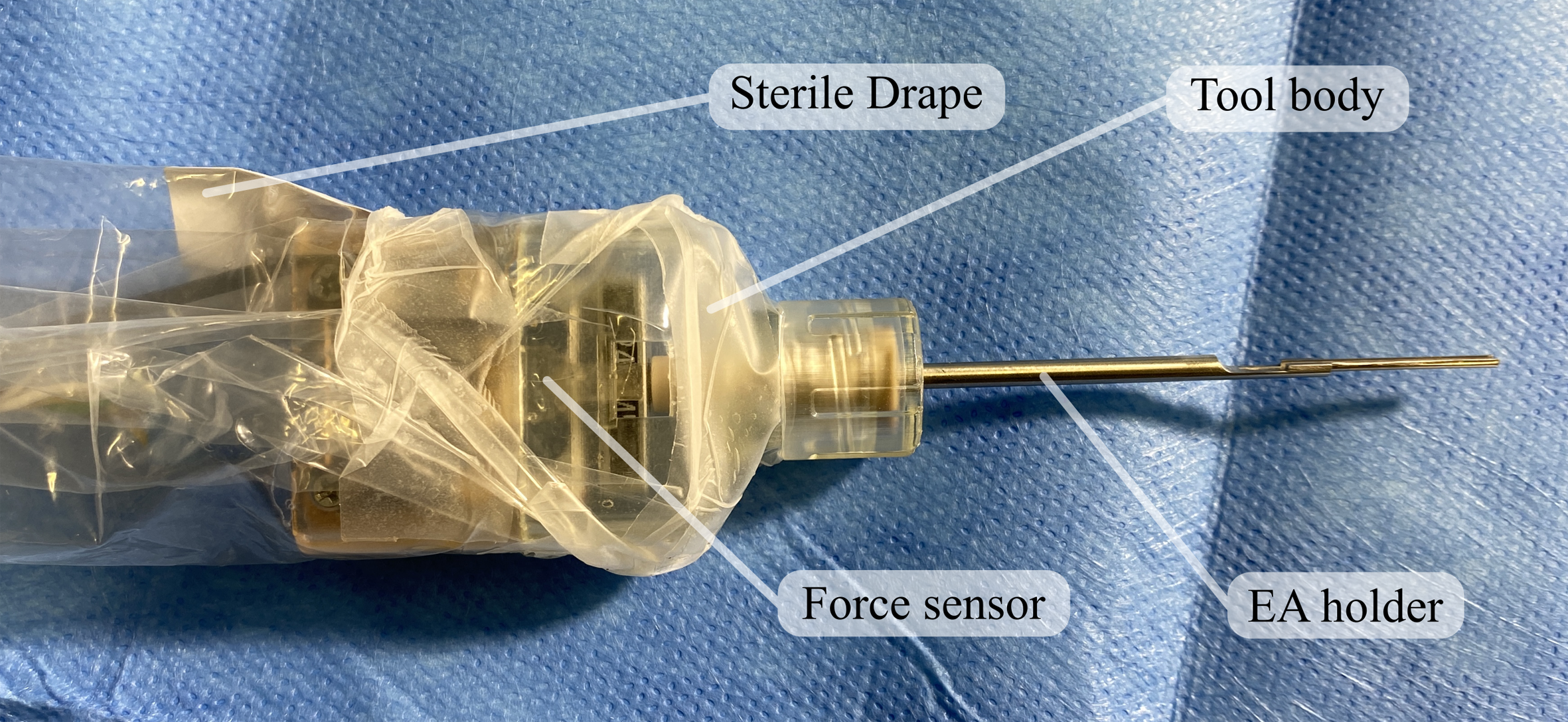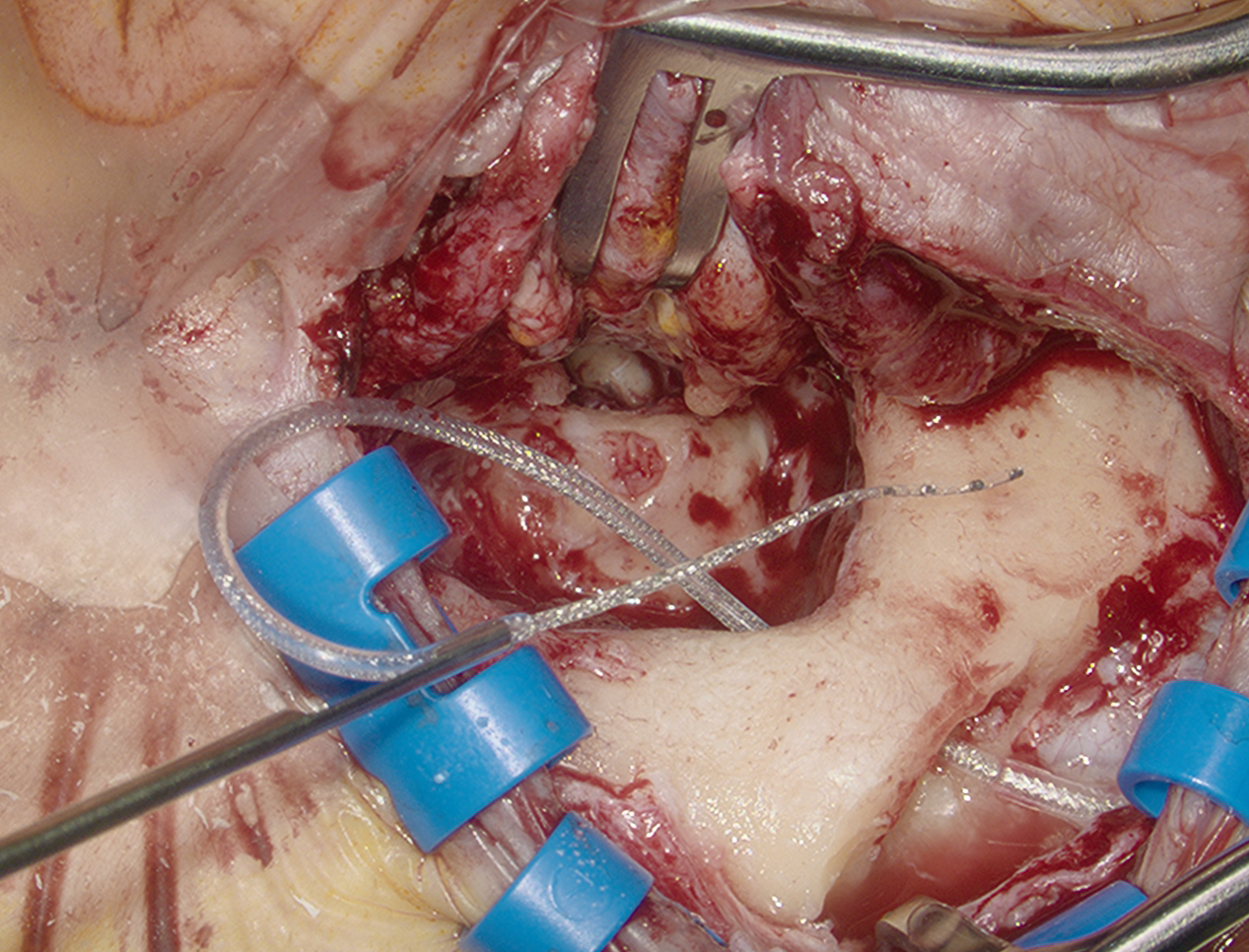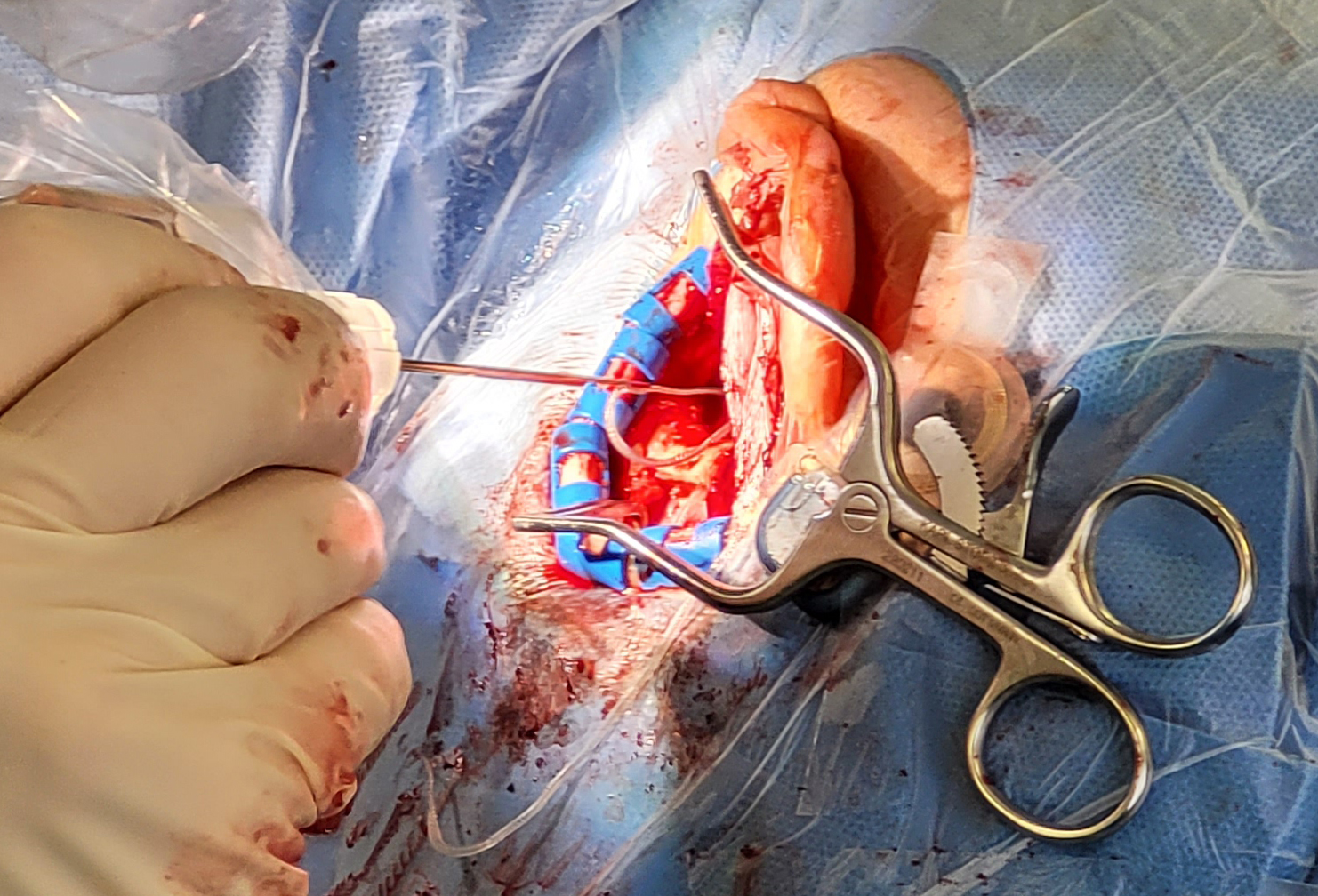Intraoperative CI insertion force measurement system
Highlights:
- Pioneering application of a force-sensitive insertion tool for a clinical setting
- Accuracy of the measurement method is equivalent the gold standard in lab experiments
- Successful integration of the tool into the conventional workflow of CI surgery
- Feasibility of insertion force measurement during standard CI surgery demonstrated
- Report of the world’s first measurements of in vivo insertion forces
- Initial findings from an ongoing clinical study show the potential of this technology
Summary:
The interaction forces between the electrode array (EA) of a cochlear implant (CI) and the intracochlear tissue are closely linked to the preservation of residual hearing as they presumably indicate the likelihood of intracochlear trauma.
Due to this, multiple studies have investigated strategies to reduce these so-called insertion forces such as speed reduction and trajectory control. Assessing the effectiveness of these strategies however is difficult, as haptic force control during surgery performed by the surgeon is hindered by the overlap of force magnitudes with human perception limits. Moreover, proposed strategies lack in vivo validation as all studies on insertion forces are performed in artificial cochlea models and human or animal specimens.
We developed the ForceptionTool, a device that allows the measurement of insertion forces during standard CI surgery. Intraoperatively, it serves as a replacement for the surgical forceps that is used to hold the EA. The EA holder is connected to a force sensor, which measures the reactive force transmitted through the EA. To enable a free range of motion during measurements, an IMU records the spatial orientation of the tool, which is used to remove the changing effect of gravity on the force signal. Multiple surgeons as well as experts on hospital hygiene were involved in the design process to ensure transferability into the OR.


Since its introduction, the ForceptionTool has been extensively evaluated. To validate the measurement methodology, insertions into artificial cochlea models were performed with simultaneous force measurement through the tool and a sensor below the model as a gold standard comparison. The results showed that measurements with the tool are completely equivalent to the gold standard. The workflow to use the tool intraoperatively together with the necessary measures to ensure sterility were tested in multiple cadaver experiments. These were also used for an initial force collection in a more realistic environment. In May 2023, the tool was first used intraoperatively as part of a study. Since then, forces were successfully measured during multiple standard CI surgeries.

 Figure 2: Pre-clinical evaluation of the ForceptionTool (left) and the tool inside the sterile drape (right) as it can be used in an intra-operative setting. Use right click for full resolution images. In case you are using a figure, please cite Böttcher-Rebmann et al. (2023).
Figure 2: Pre-clinical evaluation of the ForceptionTool (left) and the tool inside the sterile drape (right) as it can be used in an intra-operative setting. Use right click for full resolution images. In case you are using a figure, please cite Böttcher-Rebmann et al. (2023). 

This proof of concept paves the way for multiple detailed investigations into insertion forces. Just a few examples are:
- The investigation of the relation between insertion forces and residual hearing preservation based on specific values,
- The experimental assessment of the effect of proposed force reduction measures,
- The extension of the perception of surgeons through real-time feedback on the insertion forces.
Publications:
| Peer-reviewed journal articles | |
| Rau TS, Böttcher-Rebmann G, Schell V, Cramer J, Artukarslan E, Baier C, Lenarz T and Salcher R (2024): First clinical implementation of insertion force measurement in cochlear implantation surgery. Front. Neurol. 15:1400455. [ doi; IF: 3.400]. | |
| Böttcher-Rebmann G, Schell V, Zuniga MG, Salcher R, Lenarz T, Rau TS (2023): Preclinical evaluation of a tool for insertion force measurements in cochlear implant surgery. Int J Comput Assist Radiol Surg. 18(11):2117-2124. doi: 10.1007/s11548-023-02975-2. [ doi; IF: 3.421]. | |
| Böttcher-Rebmann G, Schell V, Budde L, Zuniga MG, Baier C, Lenarz T, Rau TS (2023): A Tool to Enable Intraoperative Insertion Force Measurements for Cochlear Implant Surgery. IEEE Transactions on Biomedical Engineering 70(5):1643-1650. [ doi; IF: 4.756]. | |
| Schell V, Böttcher-Rebmann G, Budde L, Zuniga MG, Lenarz T, Rau TS (2021): A software for online monitoring of orientation-compensated forces during CI insertion. Current Directions in Biomedical Engineering 7(2):97-100. [ doi]. | |
| Zuniga MG, Böttcher-Rebmann G, Schell V, Lenarz T, Rau TS (2021): Illustrating orientation changes of the insertion trajectory during cochlear implant electrode array insertion. Current Directions in Biomedical Engineering 7(2):113-116. [ doi]. | |
| Talks and Posters at Conferences | |
| Rau TS, Schell V, Cramer J, Baier C, Lenarz T, Salcher R, Böttcher-Rebmann G (2024): In vivo proof-of-principle of insertion force measurement. In Proc. 17th International Conference on Cochlear Implants and Other Implantable Technologies (CI 2024), February 21-24, Las Palmas de Gran Canaria, Spain. | |
| Rau TS, Schell V, Zuniga MG, Salcher R, Lenarz T, Böttcher-Rebmann G (2023): First intraoperative application of insertion force measurement in cochlear implantation surgery. In Proc. 57th Annual Conference of the German Society for Bio-medical Engineering (DGBMT within VDE), September 26-28, Duisburg, Germany. | |
| Schell V, Böttcher-Rebmann G, Budde L, Fandio K, Lenarz T, Rau TS (2023): A method for visualizing electrode array inser-tion forces. In Proc. 16th European Symposium on Pediatric Cochlear Implantation (ESPCI), May 31st - June 3rd, Rotter-dam, the Netherlands. | |
| Böttcher-Rebmann G, Lange V, Schell V, Cramer J, Lenarz T, Rau TS (2023): Adjustment of realistic trajectories can reduce the insertion force in cochlear implant surgery. In Proc. 16th European Symposium on Pediatric Cochlear Implantation (ESPCI), May 31st - June 3rd, Rotterdam, the Netherlands. | |
| Rau TS, Fandio K, Schell V, Lenarz T, Böttcher-Rebmann G (2023): Visual feedback of insertion forces in cochlear implantation surgery. In Proc. 94th Annual Meeting German Society of Oto-Rhino-Laryngology, Head and Neck Surgery, May 17-20, Leipzig, Germany. Laryngo-Rhino-Otologie 102(S02):278-278. | |
| Böttcher-Rebmann G, Zuniga MG, Schell V, Salcher R, Lenarz T, Rau TS (2022): Preclinical Evaluation of a Surgical Tool for the Measurement of Insertion Forces During Conventional Cochlear Implant Surgery. In Proc. CI 2022 Conference, May 18-21, Washington DC, USA. | |
| Schell V, Böttcher-Rebmann G, Budde L, Zuniga MG, Lenarz T, Rau TS (2022): A method to visualize orientation-independent forces in real-time during cochlear implant electrode array insertion. In Proc. 93rd Annual Meeting German Society of Oto-Rhino-Laryngology, Head and Neck Surgery, May 25-28, Hannover, Germany. Laryngo-Rhino-Otologie 101(S02):243-244. doi:10.1055/s-0042-1746802. | |
| Böttcher-Rebmann G, Schell V, Budde L, Baier C, Lenarz T, Rau TS (2021): Design and first evaluation of a manual insertion tool enabling force measurements during cochlear implant electrode array insertion. In Proc. 55th Annual Conference of the German Society for Biomedical Engineering (DGBMT within VDE), October 05-07, Hannover, Germany. | |
| Zuniga MG, Hügl S, Lenarz T, Rau TS (2020): Electrode Array Insertion Forces Using a Handheld Tool: Initial Performance Evaluations. In Proc. AAO-HNSF 2020 Virtual Annual Meeting & OTO Experience, September 13-16, Boston, MA, USA: Otolaryngology–Head and Neck Surgery 163(1S):229. |
Pending patent application:
Rau TS, Budde L, Böttcher-Rebmann G, Schell V: Medical Handling System. EP 21196884. Filing Date: 15 September 2021. [ patent].
Contact details:
If you are interested in this technology, want to join a collaboration for further development, or just have additional questions please do not hesitate to contact:
Georg Böttcher-Rebmann, M.Sc. Dr.-Ing. Thomas Rau
Boettcher.Georg@mh-hannover.de rau.thomas@mh-hannover.de
+49(0)511/532-7264 +49(0)511/532-3025
Funding:
This work was funded in part by the Federal Ministry of Education and Research of Germany (BMBF, grant number 13GW0367B), and in part by the Deutsche Forschungsgemeinschaft (DFG, German Research Foundation) under Germany’s Excellence Strategy (EXC 2177/1) within the Cluster of Excellence "Hearing4all" (Project ID 390895286).
 VIANNA
VIANNA 